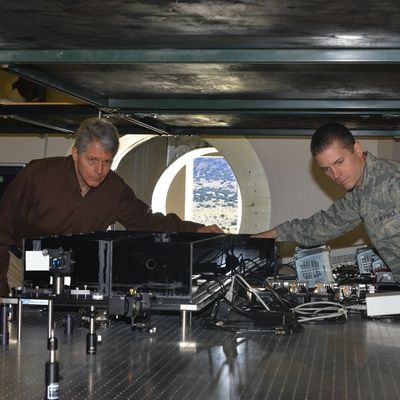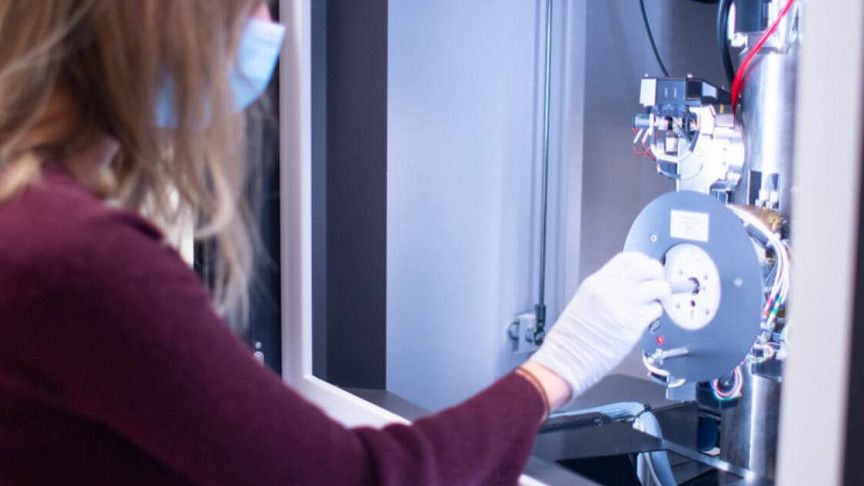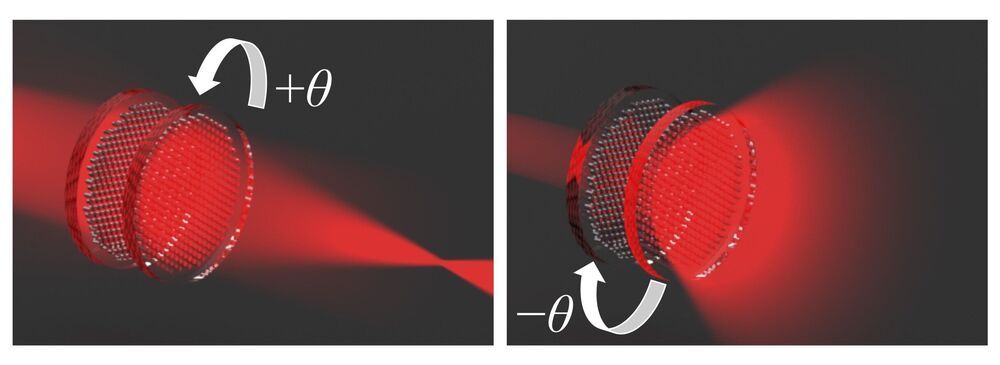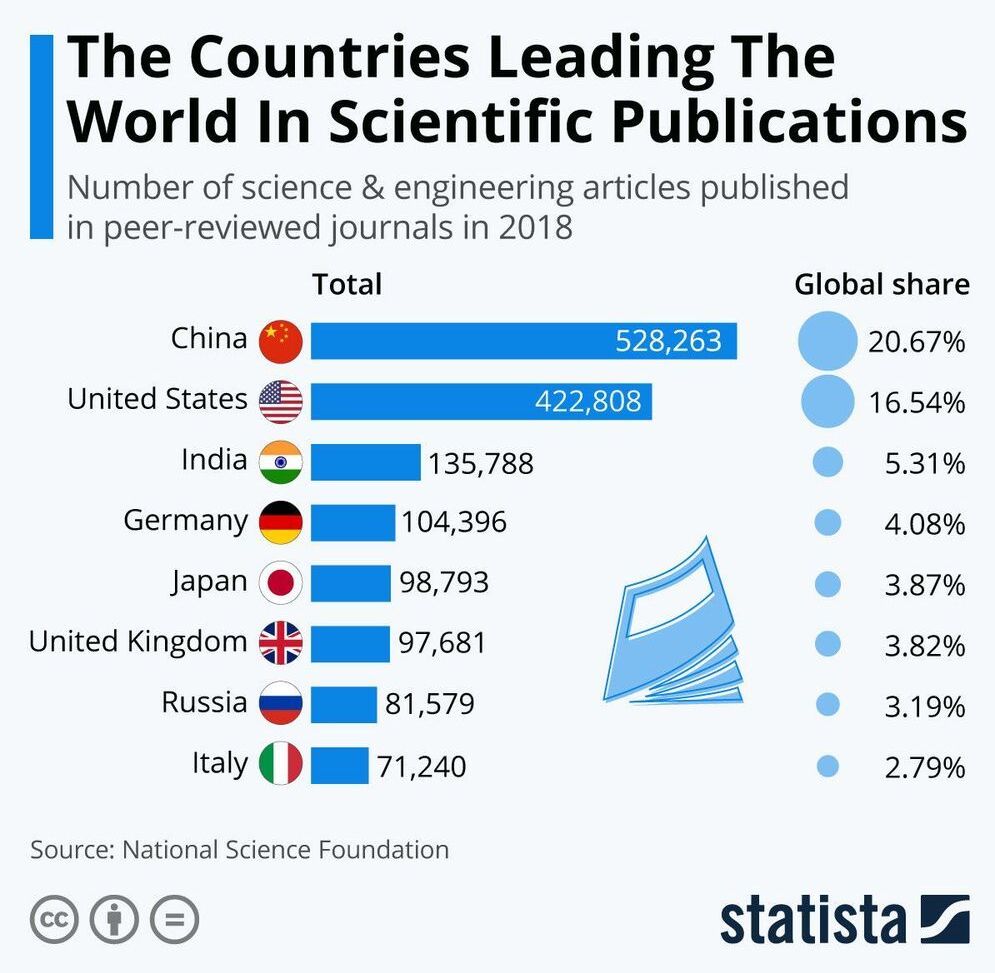Basic science, practical engineering — and an attempt to focus on the most productive lines of effort.
Category: engineering – Page 145
Reactive molecules, such as free radicals, can be produced in the body after exposure to certain environments or substances and go on to cause cell damage. Antioxidants can minimize this damage by interacting with the radicals before they affect cells.
Led by Enrique Gomez, professor of chemical engineering and materials science and engineering, Penn State researchers have applied this concept to prevent imaging damage to conducting polymers that comprise soft electronic devices, such as organic solar cells, organic transistors, bioelectronic devices and flexible electronics. The researchers published their findings in Nature Communications today (Jan. 8).
According to Gomez, visualizing the structures of conducting polymers is crucial to further develop these materials and enable commercialization of soft electronic devices—but the actual imaging can cause damage that limits what researchers can see and understand.
Understanding the dynamics of granular materials—such as sand flowing through an hourglass or salt pouring through a shaker—is a major unsolved problem in physics. A new paper describes a pattern for how record-sized “shaking” events affect the dynamics of a granular material as it moves from an excited to a relaxed state, adding to the evidence that a unifying theory underlies this behavior.
The Proceedings of the National Academy of Sciences (PNAS) published the work by Stefan Boettcher, an Emory theoretical physicist, and Paula Gago, an expert in modeling the statistical mechanics of granular matter in the Department of Earth Science and Engineering at the Imperial College of London.
“Our work marks another small step forward to describing the behavior of granular materials in a uniform way,” says Boettcher, professor and chair of Emory’s Department of Physics.
“Reverse osmosis membranes are widely used for cleaning water, but there’s still a lot we don’t know about them,” said in a statement Manish Kumar, an associate professor in the Department of Civil, Architectural and Environmental Engineering at UT Austin, who co-led the research. “We couldn’t really say how water moves through them, so all the improvements over the past 40 years have essentially been done in the dark.”
The researchers discovered that the problem with desalination membranes was that they were inconsistent in density and mass distribution. By giving the membranes a uniform density at the nanoscale, they were able to improve their performance.
The researchers’ new membranes are 30% to 40% more efficient, requiring less energy to clean more water. Although more efficient than non-membrane desalination processes, reverse osmosis membranes still use plenty of energy, a problematic aspect the researchers are working on.
The odd, wavy pattern that results from viewing certain phone or computer screens through polarized glasses has led researchers to take a step toward thinner, lighter-weight lenses. Called moiré, the pattern is made by laying one material with opaque and translucent parts at an angle over another material of similar contrast.
A team of researchers from Tokyo University of Agriculture and Technology, TUAT, in Japan have demonstrated that moiré metalenses—tiny, patterned lenses composed of artificial ‘meta’ atoms—can tune focal length along a wider range than previously seen. They published their results on November 23 in Optics Express.
“Metalenses have attracted a lot of interest because they are so thin and lightweight, and could be used in ultra-compact imaging systems, like future smart phones, virtual reality goggles, drones or microbots,” said paper author Kentaro Iwami, associate professor in the TUAT Department of Mechanical Systems Engineering.
China keeps leading the US on investments in tech.
The U.S. National Science Foundation (NSF) has released data showing that 2555, 959 science and engineering (S&E) articles were published around the world in 2018, a considerable increase on the 1755, 850 recorded a decade ago. Global research output in that sector has grown around 4 percent annually over the past ten years and China’s growth rate is notable as being twice the world average. While the U.S. led the way in 2008, it has now been displaced as the world’s top S&E research publisher by China.
The views expressed in this article are those of the author alone and not the World Economic Forum.
A desalination membrane acts as a filter for salty water: push the water through the membrane, get clean water suitable for agriculture, energy production and even drinking. The process seems simple enough, but it contains complex intricacies that have baffled scientists for decades—until now.
Researchers from Penn State, The University of Texas at Austin, Iowa State University, Dow Chemical Company and DuPont Water Solutions published a key finding in understanding how membranes actually filter minerals from water, online today (Dec. 31) in Science. The article will be featured on the print edition’s cover, to be issued tomorrow (Jan. 1).
“Despite their use for many years, there is much we don’t know about how water filtration membranes work,” said Enrique Gomez, professor of chemical engineering and materials science and engineering at Penn State, who led the research. “We found that how you control the density distribution of the membrane itself at the nanoscale is really important for water-production performance.”
Diamond is the hardest material in nature. But out of many expectations, it also has great potential as an excellent electronic material. A joint research team led by City University of Hong Kong (CityU) has demonstrated for the first time the large, uniform tensile elastic straining of microfabricated diamond arrays through the nanomechanical approach. Their findings have shown the potential of strained diamonds as prime candidates for advanced functional devices in microelectronics, photonics, and quantum information technologies.
The research was co-led by Dr. Lu Yang, Associate Professor in the Department of Mechanical Engineering (MNE) at CityU and researchers from Massachusetts Institute of Technology (MIT) and Harbin Institute of Technology (HIT). Their findings have been recently published in the prestigious scientific journal Science, titled “Achieving large uniform tensile elasticity in microfabricated diamond”.
“This is the first time showing the extremely large, uniform elasticity of diamond by tensile experiments. Our findings demonstrate the possibility of developing electronic devices through ‘deep elastic strain engineering’ of microfabricated diamond structures,” said Dr. Lu.
Power plant on a chip
Posted in chemistry, computing, engineering
Scientists at Lehigh University are developing a tiny generating plant, housed on a silicon chip, that they believe can produce enough hydrogen to run power-consuming portable devices.
The amount of hydrogen produced was small, but it was enough to demonstrate that the Lehigh project is feasible. Given time the Lehigh group believes they will develop a working generating plant, housed on a silicon chip that produces sufficient quantities of hydrogen to run different types of power consuming portable devices.
‘About 10 years ago people starting thinking: ‘can we take the same fabrication methods for silicon chips and instead of using them for electronics, use them for something else? said Mayuresh Kothare, assistant professor of chemical engineering.
Engineering student Carvey Ehren Maigue has been named the James Dyson Awards first-ever global sustainability winner for his AuReus system, in which waste crops are turned into cladding that can generate clean energy from ultraviolet light.
Unlike traditional solar panels, which only work in clear conditions and must face the sun directly because they rely on visible light, the translucent AuReus material is able to harvest power from invisible UV rays that pass through clouds.
As a result, it is able to produce energy close to 50 per cent of the time according to preliminary testing, compared to 15 to 22 per cent in standard solar panels.









